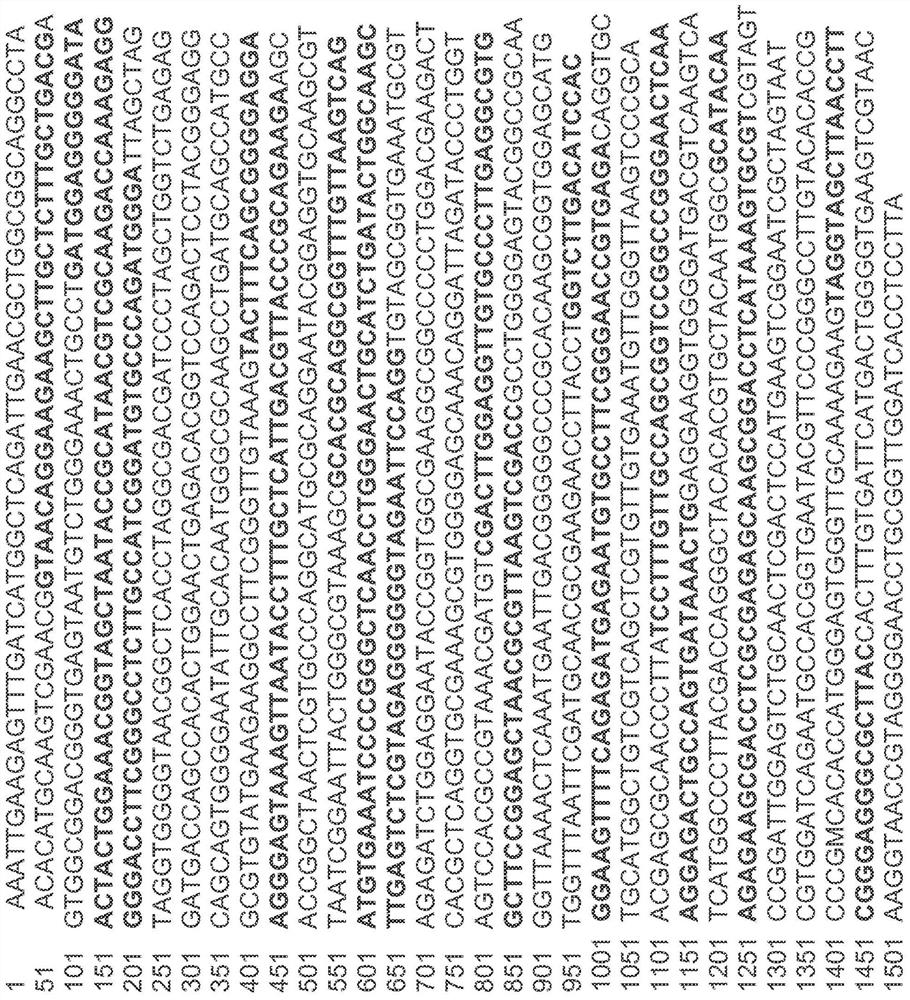Synergistic bacterial compositions and methods of manufacture and use thereof
A technology of composition and bacteria, applied in bacteria, drug combination, medical raw materials derived from bacteria, etc., can solve problems such as non-standardization and difficulty in large-scale implementation
- Summary
- Abstract
- Description
- Claims
- Application Information
AI Technical Summary
Problems solved by technology
Method used
Image
Examples
example 1
[0244] Example 1. Construction of binary pairs in a high-throughput 96-well format / plate preparation
[0245] Bacterial pairs were used to identify binary pairs suitable for inhibiting C. difficile. To prepare plates for the high-yield screening assay of binary pairs, vials of the -80°C glycerol stock bacterial library were thawed and diluted to 1e8 CFU / mL. Each strain was then diluted 10X (to achieve a final concentration of 1e7 CFU / mL for each strain) into 200 μL of PBS + 15% glycerol in a well of a 96-well culture plate. Plates were then frozen at -80°C. When required, when tested with C. difficile in the CivSim assay, plates were removed from -80°C and thawed anaerobically at room temperature.
example 2
[0246] Example 2. Construction of triplets in a high-throughput 96-well format
[0247] Triple combinations of bacteria were used to identify triple combinations useful for inhibiting C. difficile. To prepare plates for high-yield screening triplet combinations, vials of the -80°C glycerol stock bacterial library were thawed and diluted to 1e8 CFU / mL. Each strain was then diluted 10X (to achieve a final concentration of 1e7 CFU / mL for each strain) into 200 μL of PBS + 15% glycerol in a well of a 96-well plate. Plates were then frozen at -80°C. When assay required, plates were removed from -80°C and thawed anaerobically at room temperature when tested with C. difficile in the CivSim assay.
example 3
[0248] Example 3. Construction of a CivSim analysis for screening bacterial compositions that inhibit the growth of Clostridium difficile
[0249] Compositions that inhibit the growth of C. difficile were identified using a competition assay (CivSim assay). Briefly, overnight cultures of C. difficile were grown in SweetB-FosIn under anaerobic conditions to allow C. difficile to grow. In some cases, other suitable media can be used. SweetB-FosIn is a version of BHI (Remel R452472) supplemented with the following components: Components per liter: 37g BHI powder (Remel R452472), supplemented with 5g yeast extract UF (Difco210929), 1g cysteine-HCl ( Spectrum C1473), 1g cellobiose (Sigma C7252), 1g maltose (Spectrum MA155), 1.5ml hematin solution, 1g soluble starch (Sigma-Aldrich S9765), 1g fructooligosaccharide / inulin (Jarrow Formulas 103025) and 50 mL 1M MOPS / KOH pH 7. To prepare the hematin solution, hematin (Sigma 51280) was dissolved in 0.1 M NaOH to make a 10 mg / mL stock. ...
PUM
 Login to View More
Login to View More Abstract
Description
Claims
Application Information
 Login to View More
Login to View More - R&D
- Intellectual Property
- Life Sciences
- Materials
- Tech Scout
- Unparalleled Data Quality
- Higher Quality Content
- 60% Fewer Hallucinations
Browse by: Latest US Patents, China's latest patents, Technical Efficacy Thesaurus, Application Domain, Technology Topic, Popular Technical Reports.
© 2025 PatSnap. All rights reserved.Legal|Privacy policy|Modern Slavery Act Transparency Statement|Sitemap|About US| Contact US: help@patsnap.com



